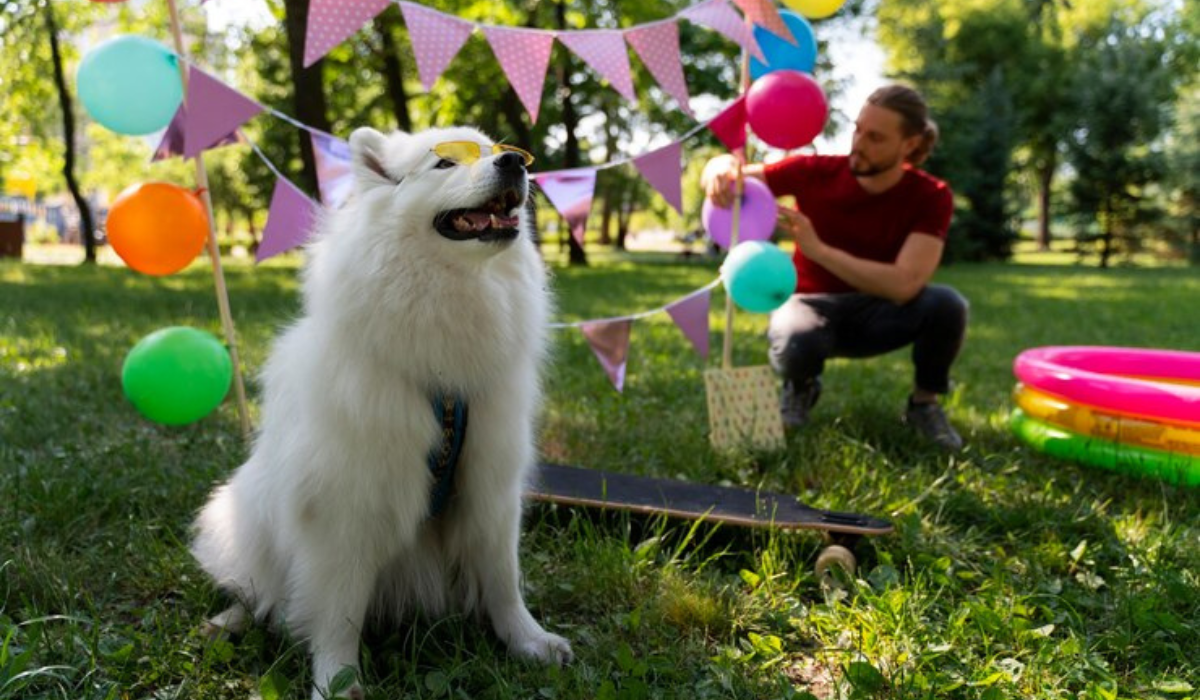Swimming with your pet can be a delightful and bonding experience, especially during the summer. Nonetheless, making sure your dog is safe in the water is essential. Here’s a comprehensive guide on making swimming a safe and enjoyable activity for you and your dog, from choosing the right breeds to implementing safety measures.
Hazards and risks associated with water:
Dogs are at risk when swimming. Potential hazards include drowning, poor water quality, toxins, infectious agents, and trauma from unseen objects. To ensure your dog’s safety and well-being, you must understand these dangers.
The best breeds for swimming are:
Any dog can become a skilled swimmer, but some breeds are naturally more adept. The Standard Poodle, Labrador Retriever, and Newfoundland are known for their excellent swimming abilities. Pugs and Shih Tzus are not naturally good swimmers, however. The breed characteristics of your dog can contribute to a safer swimming experience for you and your dog.
Life vests and supervision:
Water accidents can happen quickly, so always supervise your dog. In spite of the fact that your dog may be a good swimmer, consider getting him a comfortable life vest with a handle. By doing so, you can provide your dog with an extra layer of safety and lift him out of the water if necessary.
The exit strategy and ramp are as follows:
Use a ramp to teach your dog how to exit the water. If there are no accessible exits to pools or lakes, dogs may have difficulty getting out. An exit strategy is crucial for their safety, and they should be familiar with it.
You can restrict access by:
Unsupervised access to water should be avoided because dogs are prone to falling or jumping into water without warning. Both traditional and frozen bodies of water are affected by this. The best way to ensure your dog’s safety around frozen bodies of water is to restrict access to them.
Keep an eye on the quality and temperature of the food:
Make sure your dog’s water is the right temperature. Also, be aware of the quality of the water, especially in lakes and ponds. A toxic algae bloom can harm your dog, so maintaining good water conditions is essential.
Water and Hydration:
Bring fresh, clean drinking water for yourself and your dog. Make sure your dog does not drink from the water source to prevent potential health issues. The importance of maintaining your dog’s hydration cannot be overstated, and providing them with a separate source of water is advised.
Safety on a boat:
For easy entry and exit, use dog-safe ramps when boating with dogs. Make sure your dog wears a life vest while boating, even if they are good swimmers. There are additional risks associated with boating, so safety measures are crucial.
Acute heat stroke awareness:
In hot weather, watch out for signs of heat exhaustion. Keep your dog hydrated, take breaks, and provide shade. Early detection of heat-related problems can save your dog’s life.
The following precautions should be taken to avoid fishing hook hazards:
It is important to keep dogs away from fishing bait and poles in order to prevent injuries. Dogs can suffer serious problems if they consume bait or hooks. It is important to be cautious when swimming near fishing areas.
Water exits should be monitored for hazards:
Water exits should be checked for glass, metal, or debris that could harm your dog’s paws. Beaches and shorelines may have hazards that pose risks to your dog. In order to ensure a safe swimming environment, it’s important to be aware of potential dangers.
Bathing and drying after swimming:
Make sure your dog gets a bath after swimming to get rid of pool chemicals, parasites, and bacteria. Keeping your dog’s ears dry helps prevent infections. Infections are more likely to occur in breeds with floppy ears.
Parasites and animals:
In the ocean, be careful of sea lice and jellyfish that can irritate or sting your dog. You should also be aware of other potential threats, such as snakes and alligators, depending on where you live. If you have specific concerns, it is advisable to consult your veterinarian.
Ensure a safe environment by:
Provide your dog with a safe and enjoyable swimming environment. Preventive measures should be implemented based on the needs and characteristics of your dog. For specific concerns, seeking veterinary advice is essential.
Swimming with your canine companion can be a joyful and safe experience with these safety tips.
How to teach your dog to swim:
The gradual introduction of water to dogs is essential because not all dogs are natural swimmers. It is important to teach your dog how to swim safely, including how to find the pool’s exit.
Wear a life jacket:
Make sure your dog wears a comfortable life jacket when swimming in unpredictable waters. An extra layer of safety is provided by a life jacket; even strong swimmers can be overwhelmed.
Make sure you remember and behave well:
For your dog’s safety around and in water, basic manners and recall are essential. Essential skills can be reinforced with training from an AnimalKind trainer.
Make sure the water is safe:
Be aware of potential dangers like riptides, submerged objects, or people before letting your dog jump in. Before entering the water, teach your dog to wait.
Water should be consumed with caution:
Your dog should not drink from stagnant puddles or pools, since they may contain harmful organisms. Provide fresh water for hydration and bring a filtration device if needed; saltwater can be toxic.
After swimming, rinse off with water:
Remove bacteria, chemicals, and debris from your dog’s coat after swimming. Make sure your dog’s ears are clean, especially if he swims frequently.
During the summer months, you and your furry companion can enjoy a safe and fun swimming experience by following these safety tips.









